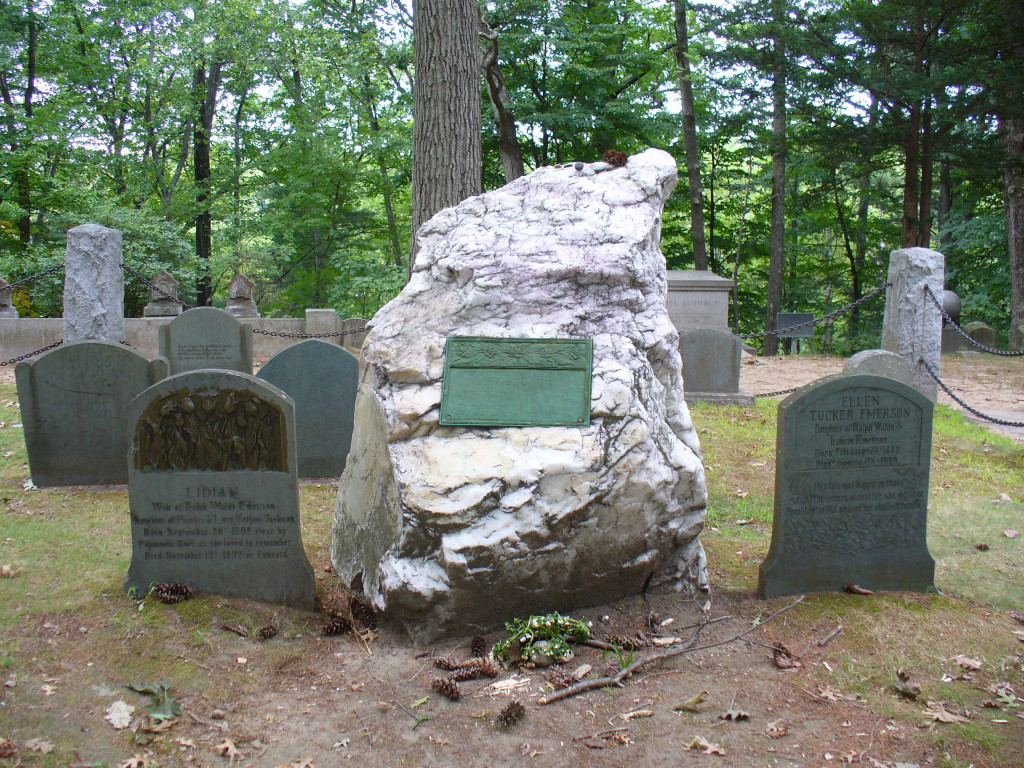 This large rock is a very fitting marker for the grave of Ralph Waldo Emerson—beloved American writer and poet. It not only does stands out as a uniquely large headstone, but also pays tribute to a man who was deeply connected to and thoughtful about nature.
This large rock is a very fitting marker for the grave of Ralph Waldo Emerson—beloved American writer and poet. It not only does stands out as a uniquely large headstone, but also pays tribute to a man who was deeply connected to and thoughtful about nature.
 Emerson (1803-1882) was a son of Unitarian minister, and was educated at Harvard College where he graduated at age 18. He married Ellen Louise Tucker when he was about 24 years old but she died two years later from tuberculosis. Throughout his life, he earned a living by being a schoolteacher, minister (which he resigned from shortly after Ellen’s death), and lecturer. At age 32, he then married Lydia Jackson and had 4 kids: Waldo, Ellen (named for his first wife at Lydia’s suggestion), Edith, and Edward Waldo.
Emerson (1803-1882) was a son of Unitarian minister, and was educated at Harvard College where he graduated at age 18. He married Ellen Louise Tucker when he was about 24 years old but she died two years later from tuberculosis. Throughout his life, he earned a living by being a schoolteacher, minister (which he resigned from shortly after Ellen’s death), and lecturer. At age 32, he then married Lydia Jackson and had 4 kids: Waldo, Ellen (named for his first wife at Lydia’s suggestion), Edith, and Edward Waldo.
Emerson’s work was highly influential in the transcendentalist movement of the early 1800s and wrote many poems and essays that discussed ideas such as individuality, freedom, optimism, and mysticism. Likely, his most well-known work is his 1836 essay, Nature. Emerson’s work is said to have influenced many great writers that followed him including Herman Melville, Walt Whitman, Emily Dickinson, Nathaniel Hawthorne, and Henry David Thoreau.
The epitaph on Emerson’s headstone is certainly thought-provoking. It’s an excerpt from one of his poems titled “The Problem” and reads “The passive Master lent his hand/To the vast soul that o’er him planned.”
 Why do you think this specific verse was included on Emerson’s headstone? Comment below—we would love to hear what you think!
Why do you think this specific verse was included on Emerson’s headstone? Comment below—we would love to hear what you think!

